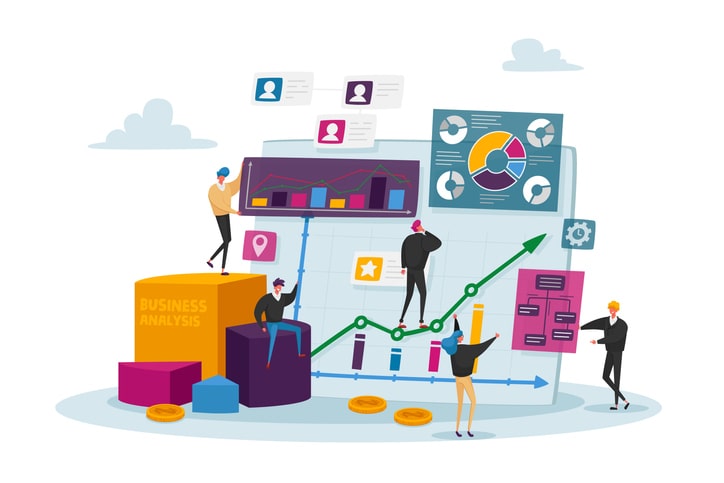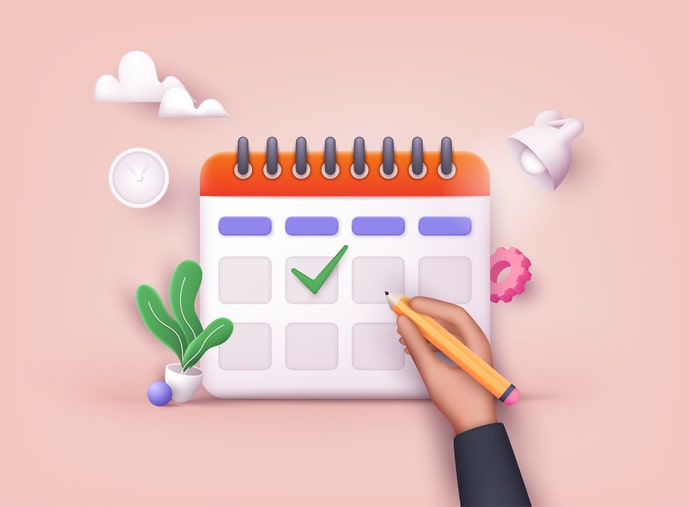We live in a world where everything is available digitally. If you’re hungry, you go on your food ordering app (UberEats, Seamless, GrubHub, Instacart, etc.) and order food for delivery or pick up. If you need something from the store, you order it online and it shows up within a couple of days – sometimes even that day. If you’re looking for a boyfriend or girlfriend, you go on dating apps and swipe left or right. The same goes for looking for a (new) career. If you’re looking for a new job, you go on LinkedIn and search for jobs that fit your interests and skill sets. Some of these jobs can be applied to with one click.
On the flip side, when a company is looking to hire someone, they will use LinkedIn to see who you are and what you can do. That is why it is so important to have a solid LinkedIn profile that fully represents your professional life with certain aspects of your personal life trickled in.
So, what makes a solid LinkedIn profile?
Professional headshot
One of the most important characteristics of a solid LinkedIn profile is having visual appeal and accuracy. This means that you should have a profile picture that is professional with an appropriate background. Your profile picture is the first thing that people see when they access your profile, so make sure it looks appropriate. Remember, this is a professional networking site, so what you post on here should be different from other social media accounts you might have.
About
Your LinkedIn profile should utilize many of the multiple sections that are available and have consistent formatting throughout. While there is no right or wrong way to set up your profile, what you do not want is for it to look sloppy, inconsistent, and all over the place.
After your profile picture, another important feature is the About section. Your About section, or summary should be something that is authentic and unique to you. It is something you should take some time to think about rather than writing something at the advice of a blog post.
For example, if you’re majoring in business with a concentration on sports marketing, a short and clean summary would be Experienced in event management and customer service related roles. Passionate about sport and making an impact on others.
Some people might argue your summary should be longer, but it’s what works best for you and the market you are targeting.
Another example, for a professional writer who mainly focuses in the healthcare and financial field would be Writing professional with extensive experience working in the technology, healthcare, and learning and development industries, designing and implementing knowledge-based strategies. Technical writer with the ability to communicate with customers of all levels while providing user-friendly outcomes.
As long as your About section summarizes who you are, very similar to an Objective section of a resume, you should be golden.
Headline
Another relevant part of this introduction section is your headline. The headline should include your current role and relevant keywords to your industry in order to optimize SEO. This way, you increase your chances of your profile being seen when people search those keywords.
If you’re targeting an accounting job, make sure your headline says you are an accountant or in school to get your degree in accounting. If you’re looking to work in sales, make sure you include this. The easier it is to access information from the top of your profile, the easier it is for recruiters to consume your professional history and capabilities.
Experience and Education
Once you have a solid introduction setting, you can move onto the Experience and Education sections. My advice is to take the time to add a lot of detail to your experience, but at the same time not overwhelm the reader. Many people seem to make the mistake of regurgitating their resume onto their LinkedIn profile. LinkedIn should serve as a complement to your resume; the same language and data should be used. However, with your resume, you are trying to condense as much information as possible into one or two pages. With LinkedIn, you have the luxury to expand on your experiences and add things that did not make the cut for your resume. You can almost consider it an electronic CV.
Of course, make sure to include all the relevant details like dates and titles of the positions you’ve held; you should avoid using contractions and abbreviations. Hiring managers love to see statistics; so, if you know the number of sales you made, the number of subscribers you generated, the amount of money closed in total on contracts, the number of staff or customers supported, etc. include it. The format of how you describe your experience can be any way you’d like, so you could use bullet points or full sentences.
First person writing is acceptable here if that is consistent with your format. One thing I like to do when describing my experience is to open with a sentence or two about the organization, which gives some credibility and context to your role.
Do not overlook the education section either. Make sure to have your degree(s) listed with relevant dates. Include the clubs you were associated with and any awards received during your collegiate experience.
Featured
After finishing up your Education and Experience sections, a highlight on your profile examples of your work. LinkedIn has the Featured section where you can showcase a project you have worked on in the past that demonstrates your competencies. What you decide to use in the Featured section really depends on your industry, but it should be a piece of work that you feel proud of and that speaks to your personal brand.
At minimum, you should consider having your resume on there, so it is easily downloadable for recruiters to share with hiring managers.
Projects
On top of the Featured section, consider adding other examples of your work under the Projects section. That recently completed presentation, speech, or website you designed looks really good here. Make sure you describe the context behind the project and add a link or visual for people to view your work.
Other sections
There are plenty of other sections that you can utilize to help set you apart from other profiles. Volunteering is a good example of a section you can use to showcase your involvement within your community and highlight your strengths.
Licenses and Certifications is another way you can spice up your profile, whether that is a CPR certification, a PMP certification, a SixSigma or an online certification, or others. Do not be hesitant to add in a couple things to enhance your brand. This should mostly serve as a complement to your Experience section, so no need to go overboard, but it is a nice little touch to have some things filled out here.
Skills and Recommendations are other examples of sections you can utilize to put the finishing touches on your profile. Having other people endorse some of your skills enhances your credibility and puts the rest of your profile together nicely. Hopefully, you have at least one person in mind you can think of to give you a recommendation. This is yet another way to set yourself apart and give yourself some credibility because other people are advocating on your behalf. Take advantage of these features to give your profile an edge over your peers.
You should also consider giving some recommendations as well, but they should be genuine and not given out as a favor.
Lastly, Organizations and Interests are sections that help you sprinkle on your profile what kind of a person you are outside of your career. For example, if you are passionate about animal rights, consider adding the animal rights activism groups you are a member of to your Interests and Organization sections. This could serve as a great talking point and an icebreaker with other potential connections.
–
While there is no right or wrong way to create your LinkedIn profile, these are some basic principles you should follow to make it stand out. As long as it looks visually appealing, accurate, and consistent, your profile should serve as your own canvas to showcase who you are as a person.


